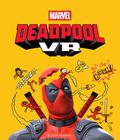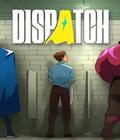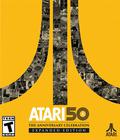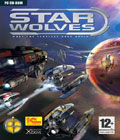Genre: RPG
Publisher: TBA
Developer: X-Bow Software
Release Date: TBA
Star Wolves, a new RTS/RPG from Russian developer X-Bow Software, takes place in the year 2226, one hundred years since humans expanded into space. The known galaxy is controlled by the iron fist of an Emperor and his Imperial navy, but true control rests in the hands of three corporations who have a monopoly over the economies on all inhabited planets. In other words, it sucks to be alive in the universe of Star Wolves. "Only space grants freedom!" exclaims the opening narration. "Are you ready to pay its real price?" And with that, you and your band of unlikely heroes embark on an adventure that spans a full 1.1 gigabytes of deep, cold, outer hard drive space.
Upon first impression, Star Wolves seems to have all of the necessary ingredients for an epic space opera: an oppressive Empire and Emperor, corporations that seek total economic domination, massive space battles, beautiful interstellar vistas, a roguish hero... Unfortunately, the promise of realizing your outer space fantasies may never get off the ground with this effort. Numerous flaws make the promising concept that is Star Wolves, well..., earthbound.
The first glaring offense is the fact that they used the same actor for nearly all of the male roles! When I play a game, I expect to be transported to another "realm." This is what I refer to as the unspoken contract between developer and gamer. Using the same actor completely destroyed this illusion and only served to create a barrier between my imagination and full gaming immersion.
A good illustration of this can be seen in the first CG cut scene, or any number that follow, for that matter. Four "different" male characters participate in this sequence and they all have the same actor's voice but with different accents. This is not to imply that the voiceover acting was bad; in fact, it's quite the contrary, but the fact that they used the same voice for the majority of male roles was way too obvious for my taste. Not all of the audio in Star Wolves suffered the same treatment as the voice acting. The music is a nice mixed bag of bluesy progressions with an occasional blend of ambient electronic music when exploring deep space and fast-paced, screaming heavy metal during battles.
Moving on to game play, I'm sure we can all agree that a game can still be good if it has a fun and engaging way to interact with what is on the screen. Every other element can be horrible, as long as the game is fun to play right? Star Wolves promises an "original blend of tactical and action game play." While the interface may be original, I found it also to be difficult and unwieldy to manage.
The game introduces you to the controls through a comprehensive in-game tutorial and unusually thick manual. Maneuvering around in space takes a bit of getting used to, but once you do, it isn't so bad. The real problem arises during battle. Battles are fought in real time and can become quite large and complex. Once your party grows, you can orchestrate large dogfights by independently controlling the actions of each character at any given time. This is achieved by selecting an on-screen profile which displays statistics such as health and weapon caches. Picking a fight is as easy as click on a target. Both concepts are simple enough, but whenever I engaged an enemy in a battle, my star fighter kept circling around its target in every conceivable direction and seldom hit its mark. More often than not, I just sat there watching my ship fly sporadically around the enemy, flailing and shooting in all directions, yet hitting and destroying nothing.
Needless to say, the controls are so inaccurate, they are almost obtrusive. I never once achieved a nice exciting flow in any battle. It was more like: click... wait...click... wait and hope your poor excuse-for-a-shot pilot will eventually hit something! It was pathetic to watch. One battle with a relatively weak opponent unnecessarily took 20 minutes! Who wants to sit there watching your character miss for a third of an hour? The controls only serve to distance you from the action and even for those hardcore RTS gamers out there, the click, pray, and go make a sandwich approach to gaming is about as exciting as watching paint dry, folks.
I felt I had no direct control over the action on screen, and I would have much preferred real time control over fighters. Instead of exhilaration from the heat of battle, one has the overwhelming feeling of frustration. I guess the idea behind this approach was supposed to simulate the frenzy of a space battle. Too bad it was more frenzy than battle. I found this to inhibit the strategic aspect rather than enhance it. In their quest to re-create a lifelike control scheme, the developers only succeeded in making the game unplayable and more difficult than it had to be.
You do eventually become stronger, and more able to successfully engage in fights. Leveling up is handled through a skill upgrade tree. The system is reminiscent of the magic upgrade systems of Diablo II and Final Fantasy X in that all upgrades are displayed as a hierarchy on a "family tree"-like diagram. As you gain experience and level up, you can choose which path, or "tree branch," you want to focus on, making level-ups highly customizable. Your space ship, and those of your party, are also customizable, allowing you to "trick" out your ride to your heart's content with new weapons systems and engines.
One area where Star Wolves does excel is in the graphics department. The outer space sequences are resplendent and breathtaking with beautiful nebulae, distant galaxies and brilliant stars to feast your eyes upon and dazzle your imagination. I found it enjoyable to simply stare in wonder at the nicely crafted environments. Xbow nailed it right on the head in its recreation of the direction-less nature of space. The graphics used in the game's numerous cut scenes were also nice. Each one was fast paced and entertaining and complemented the game's gritty cyber-punk plot. While the character modeling was just as good, the movement was a bit wooden. Think "It's a Small World After All" at Disneyland.
While seriously flawed in some departments, Star Wolves is not exactly an awful game. Overlooking these flaws, the game does have some entertaining moments, and there is no doubt the true hardcore RTS fans out there will find plenty to enjoy.
Score: 6.5/10
More articles about Star Wolves











 Star Wolves is a 3D space RPG with deep strategy elements. The game thrusts players into a world of freelance space hunters in the XXI-XXII Century A.D. during a time of political crisis for the all-powerful Empire and the three mega-corporations that control all the known worlds. Corruption prospers planet-side and only space can give a man his freedom, but not without a cost: space is not a safe place anymore. Human space pirates, rouge AI computers that rebelled against humanity and Empire patrol ships roam space in search of easy prey. Players begin the game as a bounty hunter with little more that an old, run-down space fighter and a dream, but as they advance in the game and prosper, their piloting and battle skills improve, allowing access to more advance spacecraft. Players can control a party of up to six bounty hunters, each possessing different skills, abilities and personality. Team tactics give players vast opportunities in battles when shear fire power isn't enough. Tactical ruses, planning and executing ambushes or deploying spaceships' special abilities provide cunning commanders the ability to crush enemies according to their style of play.
Star Wolves is a 3D space RPG with deep strategy elements. The game thrusts players into a world of freelance space hunters in the XXI-XXII Century A.D. during a time of political crisis for the all-powerful Empire and the three mega-corporations that control all the known worlds. Corruption prospers planet-side and only space can give a man his freedom, but not without a cost: space is not a safe place anymore. Human space pirates, rouge AI computers that rebelled against humanity and Empire patrol ships roam space in search of easy prey. Players begin the game as a bounty hunter with little more that an old, run-down space fighter and a dream, but as they advance in the game and prosper, their piloting and battle skills improve, allowing access to more advance spacecraft. Players can control a party of up to six bounty hunters, each possessing different skills, abilities and personality. Team tactics give players vast opportunities in battles when shear fire power isn't enough. Tactical ruses, planning and executing ambushes or deploying spaceships' special abilities provide cunning commanders the ability to crush enemies according to their style of play.































